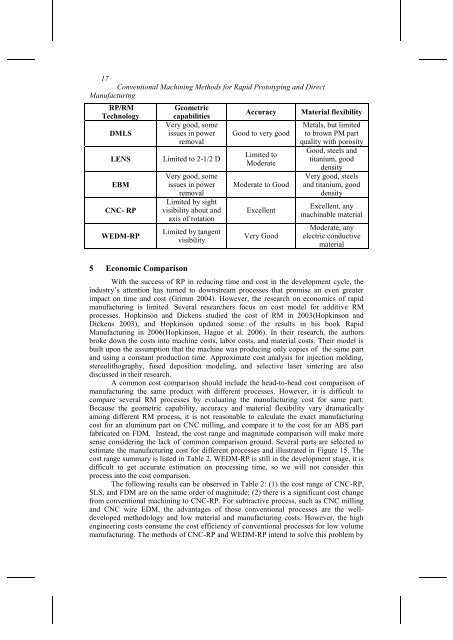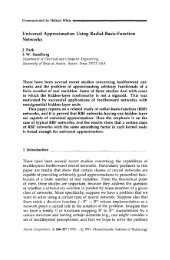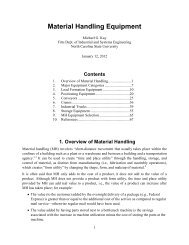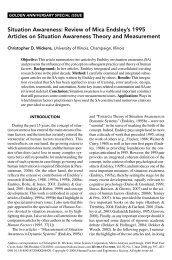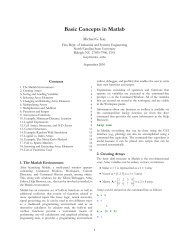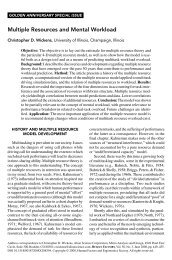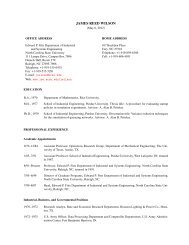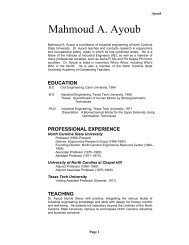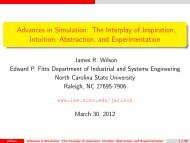Conventional Machining Methods for Rapid Prototyping
Conventional Machining Methods for Rapid Prototyping
Conventional Machining Methods for Rapid Prototyping
You also want an ePaper? Increase the reach of your titles
YUMPU automatically turns print PDFs into web optimized ePapers that Google loves.
17<br />
<strong>Conventional</strong> <strong>Machining</strong> <strong>Methods</strong> <strong>for</strong> <strong>Rapid</strong> <strong>Prototyping</strong> and Direct<br />
Manufacturing<br />
RP/RM<br />
Technology<br />
DMLS<br />
LENS<br />
EBM<br />
CNC- RP<br />
WEDM-RP<br />
Geometric<br />
capabilities<br />
Very good, some<br />
issues in power<br />
removal<br />
Limited to 2-1/2 D<br />
Very good, some<br />
issues in power<br />
removal<br />
Limited by sight<br />
visibility about and<br />
axis of rotation<br />
Limited by tangent<br />
visibility<br />
Accuracy<br />
Good to very good<br />
Limited to<br />
Moderate<br />
Moderate to Good<br />
Excellent<br />
Very Good<br />
Material flexibility<br />
Metals, but limited<br />
to brown PM part<br />
quality with porosity<br />
Good, steels and<br />
titanium, good<br />
density<br />
Very good, steels<br />
and titanium, good<br />
density<br />
Excellent, any<br />
machinable material<br />
Moderate, any<br />
electric conductive<br />
material<br />
5 Economic Comparison<br />
With the success of RP in reducing time and cost in the development cycle, the<br />
industry’s attention has turned to downstream processes that promise an even greater<br />
impact on time and cost (Grimm 2004). However, the research on economics of rapid<br />
manufacturing is limited. Several researchers focus on cost model <strong>for</strong> additive RM<br />
processes. Hopkinson and Dickens studied the cost of RM in 2003(Hopkinson and<br />
Dickens 2003), and Hopkinson updated some of the results in his book <strong>Rapid</strong><br />
Manufacturing in 2006(Hopkinson, Hague et al. 2006). In their research, the authors<br />
broke down the costs into machine costs, labor costs, and material costs. Their model is<br />
built upon the assumption that the machine was producing only copies of the same part<br />
and using a constant production time. Approximate cost analysis <strong>for</strong> injection molding,<br />
stereolithography, fused deposition modeling, and selective laser sintering are also<br />
discussed in their research.<br />
A common cost comparison should include the head-to-head cost comparison of<br />
manufacturing the same product with different processes. However, it is difficult to<br />
compare several RM processes by evaluating the manufacturing cost <strong>for</strong> same part.<br />
Because the geometric capability, accuracy and material flexibility vary dramatically<br />
among different RM process, it is not reasonable to calculate the exact manufacturing<br />
cost <strong>for</strong> an aluminum part on CNC milling, and compare it to the cost <strong>for</strong> an ABS part<br />
fabricated on FDM. Instead, the cost range and magnitude comparison will make more<br />
sense considering the lack of common comparison ground. Several parts are selected to<br />
estimate the manufacturing cost <strong>for</strong> different processes and illustrated in Figure 15. The<br />
cost range summary is listed in Table 2. WEDM-RP is still in the development stage, it is<br />
difficult to get accurate estimation on processing time, so we will not consider this<br />
process into the cost comparison.<br />
The following results can be observed in Table 2: (1) the cost range of CNC-RP,<br />
SLS, and FDM are on the same order of magnitude; (2) there is a significant cost change<br />
from conventional machining to CNC-RP. For subtractive process, such as CNC milling<br />
and CNC wire EDM, the advantages of those conventional processes are the welldeveloped<br />
methodology and low material and manufacturing costs. However, the high<br />
engineering costs consume the cost efficiency of conventional processes <strong>for</strong> low volume<br />
manufacturing. The methods of CNC-RP and WEDM-RP intend to solve this problem by


